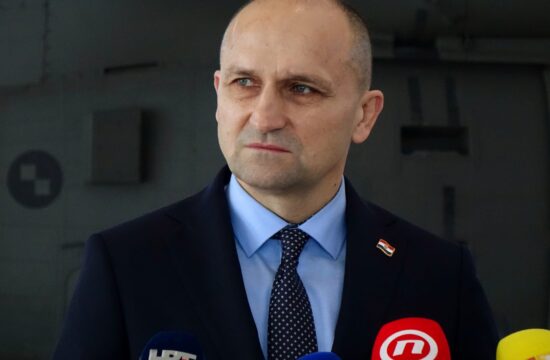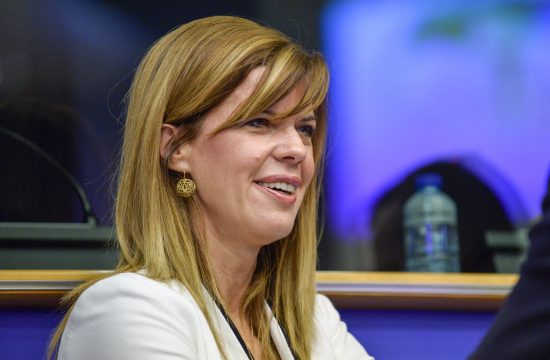Alison Spillane of the Irish Family Planning Association, Ireland's leading sexual health provider, was a guest in N1 Live on Friday, where she spoke about this year's historic referendum in which 66 percent of Irish people voted to repeal Ireland's ban on abortion.
The question of women’s reproductive rights is one of the most important social issues in Europe today. Ireland has recently, after 35 years, announced a historic change.
“I think it’s huge. I mean, this amendment to our Constitution was introduced in 1983, so we’ve seen 35 years of harm to women’s health in Ireland. Since that time, more than 170,000 women travelled overseas to access safe and legal abortion. And in recent years we’ve seen a growing trend of women ordering abortion pills over the Internet illegally, risking a 14-year prison sentence. So, that was the situation in Ireland, until the end of May, when the Irish people voted, as you said, by 66 percent, to change the Constitution and to provide abortion care here at home.”
So what’s the procedure after the referendum?
“Right now there are a couple of legal challenges to the result, which I don’t think will be successful, but they have delayed the process. So the government had hoped to introduce the legislation before the summer recess. That now is not possible. But the Minister for Health has said they would introduce legislation in the autumn, and the aim is to have abortion services accessible in Ireland from January 2019.”
The perception of Ireland was in a way that it’s a very conservative country, with the church exerting a lot of influence. What has happened that this has changed in Ireland, that this could happen at this point in time?
“I think it’s been a very long campaign. The campaign wasn’t won in the last six weeks. Organisations like my organisation have been working for decades really. And I think – and we’ve had referendums on abortion before in Ireland – but what was different this time is that women, women’s health, women’s experiences, were at the very centre of the debate. So a lot of women who had to travel for abortion spoke about their experience. The voices of the medical community were very important as well. A lot of very prominent doctors, the most senior obstetricians in the country came out and advocated for a Yes vote.
And then, lastly, I think the conversations were very important. So, members of our campaign every evening were knocking on doors in towns and villages around the country to talk about why they were supporting a Yes vote. And those conversations happened in the workplace, they happened around the dinner table, and ultimately I think the Irish people felt that we need to treat the women in crisis pregnancy with compassion, we need to provide care here at home, and we needed to change the Constitution in order to do that.
I think there are some parallels between Ireland and Croatia, in the sense that, like here, Ireland is a mostly Catholic country, 78 percent of Irish people are Catholics. So it was a majority of Catholics who voted Yes, and I think it was very easy for them to reconcile their personal faith with the need to treat abortion as a public health issue and give women the care and support they deserve.”
One of the cases you mentioned was the case from 2012, a horrific case of Savita Halappanavar, who was expecting her first child. She died in the hospital in protracted agony because staff would not abort the fetus that had no chance for survival. This was one of the cases brought up in the public as the highlight of the treatment of expectant mothers.
“Yes. That was a huge case and a really tragic case and it was kind of a watershed moment for Irish society. There was a huge public outcry after Savita Halappanavar’s death. Her husband very bravely came forward to tell her story and to ask the government to explain why this had happened in an Irish hospital. So there was significant political pressure of the government as a result of her death, and there’s been other cases, unfortunately.
When you have a law as restrictive as our law, it does nothing but harm women. Harm women’s health and, in some cases, it cost them their lives. We’ve had terrible cases over the years of girls who’ve been victims of sexual violence who have not been able to access termination of pregnancy. We’ve had cases of migrant women, particularly asylum seekers, who have no income, they don’t have the right to work, and it’s very difficult for them to get the paperwork to travel to England for a legal abortion.So, these marginalised groups of women, poor women, migrant women, are disproportionately affected by a ban on abortion because it’s almost impossible for them to access the care that they need and that creates risks. Risks of them trying to access unsafe, illegal abortion.”
How do you see movements that are happening in Poland for example? They are doing something about the legislation at the moment.
“I think there’s a very strong women’s movement in Poland which is great. There will always be threats to sexual and reproductive health and rights, there will always be hostility to measures that support women’s autonomy and women’s dignity and women’s human rights, but I think the Irish example shows that when people hear about women’s experiences, the lived reality of women’s lives, people understand that life isn’t black and white, that pregnancy is complex, and that the Constitution is not the place to regulate a healthcare issue.”
Particularly emotional, strong pictures came under the hashtag #HomeToVote, of a lot of Irish women who lived elsewhere but were coming back home to vote.
“This happened also in 2015 when we had the referendum for marriage equality, and yes, it was very emotional and very significant, and I think, again, similar to Croatia, Ireland is a nation of emigrants. People have always left Ireland and it was very significant to see women travelling back because, particularly in the context of abortion, it was women making the journey that a lot of women had to make on their own, in shame, in silence, with stigma, to travel to England for abortions. So I think the fact that people travelled home to vote was even more symbolic and significant in that respect.”
There was a story on CNN, our affiliate, a few days before the referendum about the ways the two Yes and No sectors were doing the campaign. The CNN correspondent was talking to the representatives of the No camp and said they were funded by cash from outside the country, and that there were people from the American-Irish, conservative, heritage, influencing the campaign. We know how social media can overturn results of the democratic processes.
“The No campaign put a lot of resources into paid online advertising, particularly on Google and Facebook, that we could not compete with. I don’t know how all that was funded, I’ve heard allegations of external funding. I think the decision by both Facebook and Google towards the end of the campaign to stop paid advertising in relation to the referendum was very significant in levelling the playing field.
I think what that issue showed is that there is a real gap in Irish law in terms of online regulation around elections and around referendums because there was nobody – we have an independent commission established for the referendum – but they have no role in relation to online advertising. There was a real legal loophole for this kind of activity and I think we need to learn from that for future elections and future referendums to avoid issues around, as you say, the elections in the United States and the Brexit vote in the UK.”
The question of abortion is at the core of Catholic learning. Was the Church in Ireland in any way involved in the discussion, in campaigning?
“At mass around the country there were letters being read out, the No campaigners were speaking. One of the most prominent campaigning organisations is a conservative Catholic think-tank who have a lot of access to the media. So yes, the Catholic Church was involved in the campaign, but I think, the majority of Irish people identify as Catholic, but the moral authority of the Church in Ireland has decreased significantly in recent years.”
Why was that?
“Because we know a lot more now about how the Church in Ireland has historically treated children and women so, from the late 1990s onwards, we’ve had a number of state investigations into child sexual abuse by the Catholic Church, and also investigations into what are known as Magdalene laundries, which were institutions where women who became pregnant outside of marriage were incarcerated and essentially enslaved for their lives. So the Church is no longer looked to as an authority for teachings, particularly in relation to sexuality.
While people still have very strong faith, they also don’t look to the Church for their teachings on sexuality, and I think people also feel that their personal views, on a range of issues, particularly issues like abortion, should not be imposed on other people in Irish society, that women should be given the space to make personal, private decisions for themselves, in their best interests and the best interests of their families.”
You’ve mentioned the 2015 referendum on gay marriage. A lot of people from Croatia are moving to Ireland, but many don’t know that your Prime Minister is gay.
Yes, he was active in 2015 during the campaign for marriage equality, and that was another hugely significant moment in Irish social history. I think that vote, and the vote now in 2018, has shown Ireland to be a very progressive, modern country that cares for and shows compassion towards different people in society.
How would you describe Ireland at this point in time, from your stance as an activist, and a young woman in Irish society?
Ireland is not free of problems. You know we have our challenges, I think we’re still recovering from the impact of years of austerity and economic recession and there is a lot of issues to address in the area of housing and homelessness, and the treatment of minorities, particularly asylum seekers.
There is also a debate in Ireland about migration?
Yes, particularly about the way asylum seekers are housed in a system called Direct Provision. Only recently we’ve had a Supreme Court ruling to enable them to have the right to work. Up until now, they’ve just received a weekly payment of around €20, and they could be waiting years for their applications to be processed, basically living in institutions. It’s not a good way to approach these issues and integrate people in society and help them rebuild their lives.
Thank you so much for sharing your thoughts with us and being our guest today.
Follow N1 via mobile apps for Android | iPhone/iPad | Windows| and social media on Twitter | Facebook.




